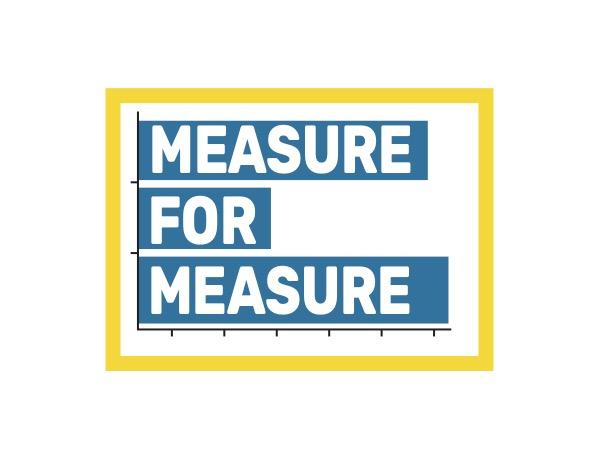The Arts of Innovation

Spillovers. Multipliers. Ripple effects. Value added. These are a few of the phrases we repeatedly use to discuss the arts’ benefits to commerce and industry. Mark how every one of them denotes a form of transfer—as if the arts cannot be fully appreciated in situ, but must be grafted to another field or domain (e.g., economics) to yield an extrinsic reaction.
While the push to appraise arts and cultural output by the lexicon of another sector can be maddening, it also can clear the way for novel measurement strategies. A few years ago, the NEA partnered with the U.S. Department of Agriculture’s Economic Research Service to demonstrate a positive relationship between the clustering of performing arts organizations and the emergence of innovative firms in rural areas. The study’s authors reunited for a subsequent paper called “Design, innovation, and rural creative places: Are the arts the cherry on top, or the secret sauce?”
Greater empirical understanding of the arts’ contributions to economic growth and innovation is part of the NEA’s current research agenda. Besides working with the Bureau of Economic Analysis to track the arts as a percentage of U.S. GDP, the NEA has invested in several Research Labs that examine the arts’ benefits for social, civic, or economic innovation. These awards support long-term research about subjects ranging from arts incubators, and arts-based jobs training for neurodiverse students, to artists who work in government, and creative professionals who work in science, business, and technology.
On a global level, meanwhile, analysts at the Organisation for Economic Co-operation and Development (OECD) strive to develop a standardized way to measure the effects of “cultural and creative sectors” on “innovation and productivity,” as they put it in a November 2023 background document.
Cultural and creative sectors, or CCS, can “spur innovation, and in turn productivity, in other sectors through supply chain linkages, the movement of skills, and the sharing of ideas through collaboration, networking and spillovers,” the document states. “However, to date, innovation in CCS and their contribution to innovation and growth across the economy has not been sufficiently evidenced. Moreover, the rare studies that have attempted to measure these broader effects do not allow for country comparisons or benchmarking.”
Although global standards for assessing the arts’ role in economic innovation are non-existent, there is authoritative guidance on how innovation itself, as a phenomenon, should be measured. According to OECD’s Oslo Manual (2018), “an innovation is a new or improved product or process (or combination thereof) that differs significantly from the unit’s previous products or processes and that has been made available to potential users (product) or brought into use by the unit (process).”
In the U.S., the Oslo Manual has influenced the National Science Foundation’s (NSF) collection of data on innovation—specifically through the Annual Business Survey, which NSF administers with the U.S. Census Bureau. In 2022, the questionnaire asked about firms’ use of design services that may have resulted in innovative products or solutions. In the survey materials, NSF declares its interest in “collecting information on clear design activities defined as part of structured creative processes.” Our office at the NEA, and our NSF colleagues, look forward to using the new data—when available—to learn more about these factors.
The NSF survey also asked several questions about research and development, with follow-up items for nonprofit groups and small businesses. For this purpose, the survey is guided in part by another OECD document, the Frascati Manual (2015), which defines R&D as “creative and systematic work undertaken in order to increase the stock of knowledge—including knowledge of humankind, culture and society [italics mine]—and to devise new applications of available knowledge.” Accordingly, the NSF questionnaire asks about R&D in the humanities and “other fields,” with “visual and performing art” named as an example.
By broaching these topics, I don’t mean to suggest that all artistic, cultural, or creative activities are innovative, or that all of them constitute R&D. If, as OECD’s Oslo Manual explains, innovation can be understood as a “new or improved product or process (or combination thereof) that differs significantly from the unit’s previous products or processes,” then criteria must be applied to terms such as “new” and “improved” and the phrase “differs significantly.” In the same vein, the OECD stipulation that R&D be not only creative but “systematic,” and that it yield tangible “new applications,” should nominate some artistic endeavors as experimental research projects, and others as not.
In any case, the time is ripe for closer scrutiny of artistic methods of knowledge production, and, indeed, their lessons for innovation. Yet, even as I type this, I recall an essay by William Hazlitt (1778-1830), titled “Why the Arts Are Not Progressive.”
In it, the English critic wrote: “This is the peculiar distinction and privilege of each, of science and of art; of the one, never to attain its utmost summit of perfection, and of the other, to arrive at it almost at once.” Because he found the arts complete unto themselves, Hazlitt would have derided systematic attempts to position them as a vehicle for innovation. “What is mechanical, reducible to rule, or capable of demonstration, is progressive, and admits of gradual improvement: what is not mechanical or definite, but depends on genius, taste, and feeling, very soon becomes stationary or retrograde, and loses more than it gains by transfusion,” he claimed.
Contemporary scholars of aesthetics, and not just public policy, are apt to distrust Hazlitt’s trinity (“genius, taste, and feeling”) without further qualification. Lacking consensus on these matters, we may be forgiven, perhaps, the limited range of metaphors we still use to extol the arts’ catalytic properties. Come, say it with me! Spillovers. Multipliers. Ripple effects. Value added.
Postscript: There are, of course, other forms of innovation. NEA Chair Maria Rosario Jackson has spoken at length about art’s power to help people and societies get “unstuck” from the seemingly intractable situations in which they often find themselves. For vivid case examples, tune into “Healing, Bridging, Thriving: A Summit on Arts and Culture in our Communities,” an event that will be co-hosted by the NEA and the White House Domestic Policy Council on Jan. 30, 2024.
Sunil Iyengar directs the Office of Research & Analysis at the National Endowment for the Arts.




